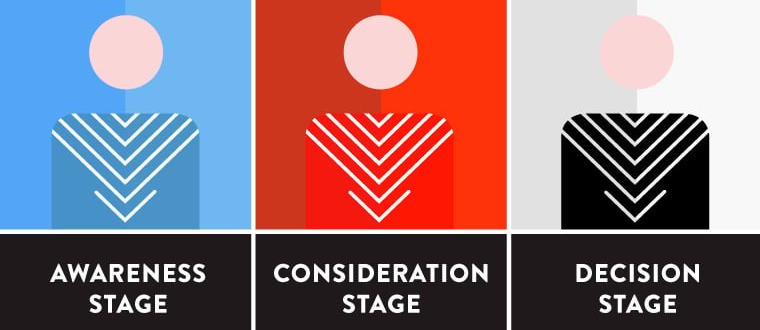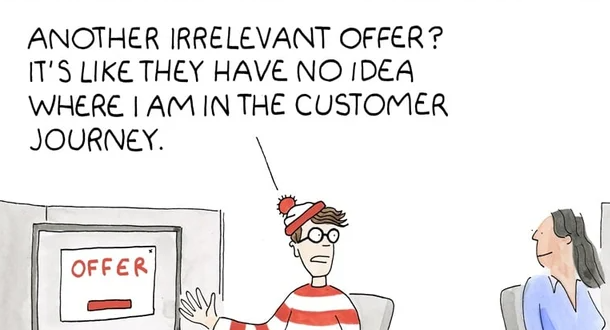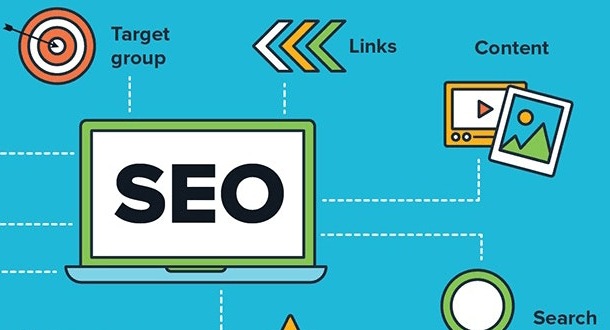Nowadays, no business can do without a good content strategy. The media landscape has changed dramatically in recent years, and the consumer plays a major role in this. Companies can no longer expect that the potential customer will automatically come to them. Consumers are critical, no longer loyal and are finding more and more alternatives through online and social media. In addition, they expect more and more from companies. Therefore, the key to success is whether the content addresses the customer's pain point or specific interest. This involves the right tone and the right values. A good content strategy is going to help you do this.
With content marketing, you focus on the information needs of your target audience and respond to them with valuable content to engage new relationships and existing customers. It means goodbye to loud advertisements, as a company you distinguish yourself positively by really helping. To help you draw up a good strategy for this, I have put a step-by-step plan on paper.
In 4 steps to a good content strategy
Step 1: Insights
The first step for a good content strategy is to look at your insights. How is your brand perceived, what goals do I have and what do I know about my customers?
If you are already creating content for your business on Facebook, for example, you can take a good look at how your brand is perceived by your existing target audience. Provided, of course, that you have disabled the posting of comments on your Facebook account.
The latter of course gives you as a company a safe feeling because no one will get the chance to talk badly about you on Facebook, but don't forget that when people want to speak ill of you, they can just as easily do so on their own account or on other social media.
In short, let those comments flow in and answer any questions. Be transparent to your target audience and make the (potential) customer feel connected to your company. With this, the choice is already bit by bit determined for the consumer instead of by the consumer.
Besides the experience of your brand with your target audience, determine for yourself your goals before you start writing content. What do you want to achieve with content marketing, what are the business goals and how will you measure the effectiveness of your content activities?
For example, a goal within your content strategy might be that you want to increase profits by 20% within six months. To achieve those profits, you need to get more sales or more customers. Without sales goals, you don't know what you want to achieve with your marketing campaign.
1,000 more followers on Facebook does not mean that these 1,000 followers will immediately generate 20% profit. When you know what you want to achieve with your goal (20% more profit within six months) then marketing can start creating specific content to persuade those 1000 followers where your buyer persona will be, to buy your product.
First you can start by gathering customer insights. Who are your customers, what are their key insights and what content do they find of value?
Gain customer insights for your content strategy via:
1. Data (and benchmark).
Statistics website
- What are the popular topics?
- How do they land on your site?
- What do you know about the target audience?
Statistics social media
- What are the most popular posts?
- Which topics have high engagement?
- Where are the most clicked on?

Google
- What are the most searched for?
- What are the most important topics and trends?

Social Conversations
- What is talked about the most?
2. Buyer personas and buyer journey
Abuyer persona helps you visualize your customer and target audience. Who is this and what different target groups exist at your company? Should we address the different target groups differently and what do we or don't we do with certain target groups?
It works as a guide while developing your marketing and communication campaigns to which your content strategy fits. In doing so, it helps to align sales and marketing. After all, these two departments deal with the same buyer personas.
Want to create your own buyer persona? Create it with the Buyer Persona Tool
Thebuyer journey is the route a potential buyer takes prior to purchase. During this online purchase process, the potential customer goes through three main stages; awareness, consideration and decision in which he needs different information.
Step 2: Brand identity
Most companies know what they do and how they operate. However, very few companies know why they do what they do. And precisely in that intention is the key to recognition and adhesion of the target audience. To arrive at an intention, you can work with Simon Sinek's Golden Circle. In this model, the values of the organization are central. Something the target audience is much more likely to connect to. This is all about the story of your company.
Why do you do what you do?
The second step is to choose an archetype or combination of archetypes. Archetypes are recognizable identities attached to brands with the goal of underscoring intent and loading the brand with human values. Archetypes play into the way people communicate. It is a way to create order in social chaos.
When you choose a particular archetype, you automatically choose a tone and basic direction in your storytelling. For example, National Geographic has the "explorer" as its archetype. This was also the intention at its founding in 1888: 'to expand and spread knowledge about geography.' Their logo also shows this: the yellow rectangle as a window to the world. In addition, NatGeo is the largest nonprofit research organization in the world. Their research ship aptly named 'The Explorer' conducts scientific research and generates content for the magazine and TV channels.
Step 3: Content formula
In the content formula, you devise the storylines you want to tell your target audience within your content strategy. These stories fit the 'Why' of your brand. They provide focus, structure but also flexibility. You can choose to bring stories to your target audience in different ways.
Are you going to write a blog, make a video or do it through photography? Try to create interesting content for your target audience and try to stand out even more through a marketing campaign or stunt. But start step by step and make sure you structure the release of your content.
Step 4: Production
During the production phase you start looking at which channels you want to use for your content and make a content calendar. If you want to share your knowledge, delve more deeply into the subject, start a conversation or quickly respond to current events, you can use this as a basis to determine which channels you will use. Below you can see the connection between the goals you want to achieve and the channels that will be used for this.
In the Netherlands people are still very much involved in social media. As many as 10.4 million Dutch people use Facebook, 7.5 million of them on a daily basis. Among all these people, your target audience will certainly be found as well. Below are the top 5 most used platforms in the Netherlands in 2017.
Keep in mind that the image below shows the number of users In the Netherlands, not the platform most suitable for your business.

Source: newcom.nl / National Social Media Survey 2017
Don't start creating content haphazardly, but plan it with a content calendar. With this you determine when you will create what type of content, for which target group, which stage in the buyer journey and for which channel. A content calendar is the practical translation of content strategy and tactics into practice. It also ensures that you publish content consistently and regularly towards your target group, because internally you know exactly who needs to deliver what and when.
Go for quality
Go for quality or else don't start content marketing, because bad content will scare off your target audience rather than help them along. Of course, quantity is also important, because you will need to make yourself heard regularly to attract the attention of your target audience and be indexed by search engines.
Below are some tips that can help you create good content:
- Make it exceptional: Don't just create content. Create the best content ever! Content that your target audience says "wow. Content that your customers would pay for. Because that's content that will be appreciated and shared.
- Avoid hard selling: No one likes to hear sales pitches. Your target audience wants to be helped. Talk about their problems, their perceptions and their experiences. Translate your product or service into solutions. Translate your sales channels into availability and price into added value.
- Don't talk about yourself: No one is usually interested in that . Good content has as few of the words "we" and "our company" as possible.
- Salespeople sell, writers write: Have content created by the right specialist. A marketer today must already meet a growing list of talents and skills. Is writing not your thing? Let a specialist do it, internally or externally.
- Use hard data: Are you going for the real knowledge transfer? Get real numbers and studies that solidify your story. Especially in B2B, opinions are quickly likely to be rendered as facts.
- Help your customer: Consider your content marketing as part of your product or service. So make it easy for your customer and help save time and money. Respond to information needs. With every content, ask yourself: how does this help my customer? What more information could I help with? How can my target audience move forward now? What is the next step?
A good content strategy requires taking a number of crucial steps in advance.
But how do you create the context around the content so that it is used optimally? And how do you create thought leadership, organic visibility and social reach from this content?
Ever heard of Inbound Marketing? This is a marketing method that ensures that the content you publish reaches the right audience (buyer persona!) at the right time. After all, the ultimate goal is to convert individuals who read the content into leads and then bring them in as new customers.





